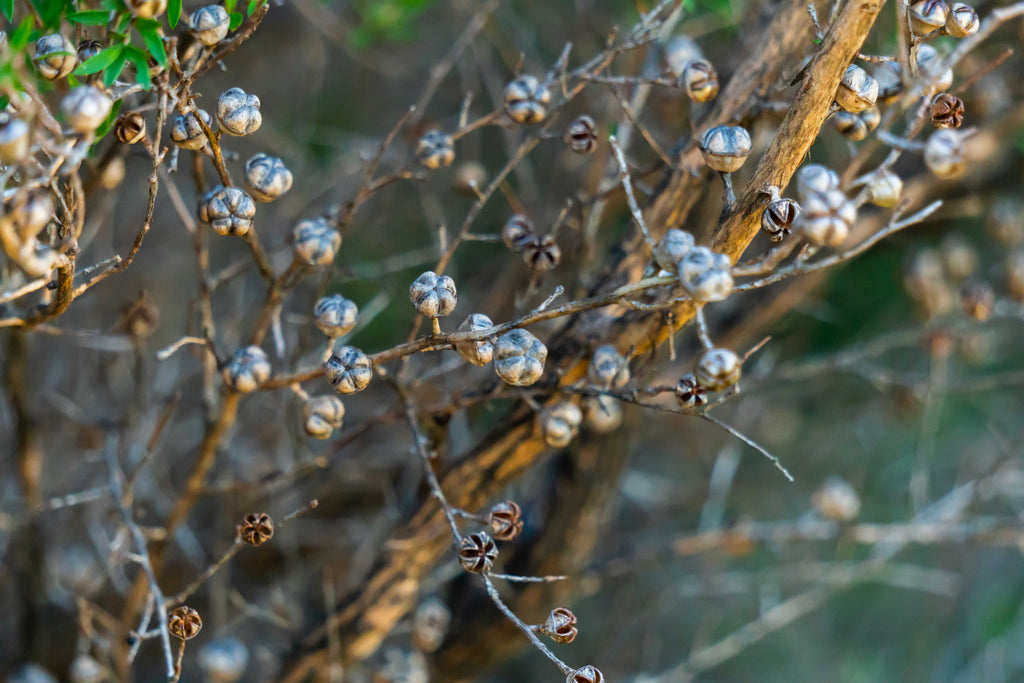The role of mānuka in regenerating native forests

Mānuka and kānuka set the stage for native forests to regrow around NZ
“Early settlers battled hard to clear their land and regarded mānuka/kahikātoa and kānuka as invasive shrubs that undid all of their hard work. Today however, these plants can act as an important tool for revegetating bare, eroded slopes. By creating shade and shelter from the wind, they provide an excellent nursery for other, slower growing native plants. Then, as these other plants get taller and overtop them, the mānuka/kahikātoa and kānuka die away as a result of being shaded.”
Mānuka and kānuka are known as seral plants. They function as an intermediate stage in the reforestation of bare land. As they grow larger, mānuka and kānuka provide canopy cover which helps to prevent invasive weeds from growing, and creates a safer environment for our slower growing native plants such as rimu, totara, kauri, puriri and kowhai to flourish. It is quite uncommon to find mānuka growing in mature native bush.
Great for preventing land erosion and damage from animals grazing:
When marginal land is planted in mānuka and kānuka, the number of pests such as rabbits, possums and wallabies also tends to decrease, benefitting the surrounding area as a result.
They grow very fast and develop deep, flexible root systems that bind unstable soil together. This helps to prevent erosion around waterways and hills. Land that has been planted in mānuka and kānuka is more resistant to being damaged by severe weather events. When Cyclone Bola hit New Zealand in 1988, areas planted in mānuka and kānuka suffered much less damage:
The seed capsules spread mānuka far and wide:

Each seed capsule contains roughly 100 seeds, which are able to rapidly colonize new areas. Very little nutrients are required for mānuka to start growing, and they can even grow in places where there is no soil.
When fire burns down forests that contain mānuka trees, the seed capsules burst, which then allows them to quickly regrow after the fire subsides. In this way, mānuka provides an important safety net for native forests all around New Zealand, and helps to ensure the longevity of our wild areas.
Supports biodiversity:
Not only do mānuka and kānuka plantations create a nursery environment where slower growing native trees can flourish, but they also provide the conditions for a wide range of invertebrates, fungi and insectivorous birds to thrive.
It is not only honey bees that enjoy the nectar from mānuka and kānuka flowers. A Department of Conservation study found that 32 insect species visited mānuka flowers. For forests to remain healthy, biodiversity is key. Each living creature plays an important role that serves other plants and insects, and contributes to the overall health of the ecosystem.
Sustainability matters:
Ironically, we have spent many decades removing mānuka from marginal farmland. Now thanks to the booming mānuka honey industry, we are seeing new plantations of mānuka being established throughout the country.
At Manuka Essentials, we believe that the best way to shift our consumption towards something that is sustainable is for people to think carefully about the supply chains that they support. By consuming products made with mānuka and kānuka you are supporting an industry that helps to encourage native forests to flourish, waterways to be kept clean, new jobs to be created in rural areas and erosion prone land to be protected from slips.
